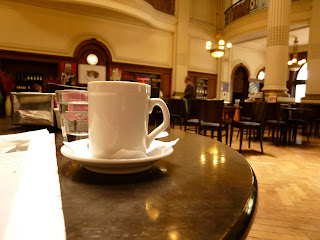Impressions from the Ezeiza mansion, an influential General after whom the airport is named. If you look past the touristy antiques shops you get an impression to see how the rich Porteños in this part of the town lived.

Houses along calle Balcarce.
On Plaza Dorrego...

Plaza Dorrego: a Tango dancer, waiting for her performance to start.
Pedro Benavente, also dubbed "El Indio" due to his native south american roots, performs on Plaza Dorrego.
The covered market of San Telmo.
A butcher ... very important in this country.

















































